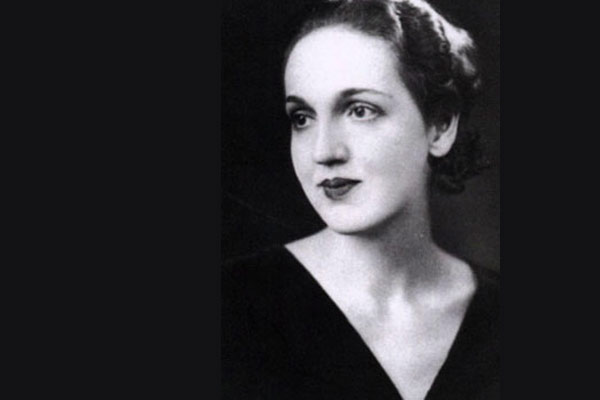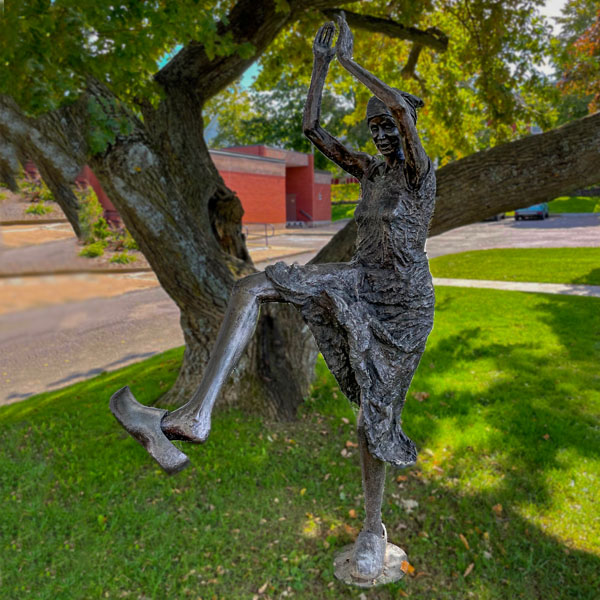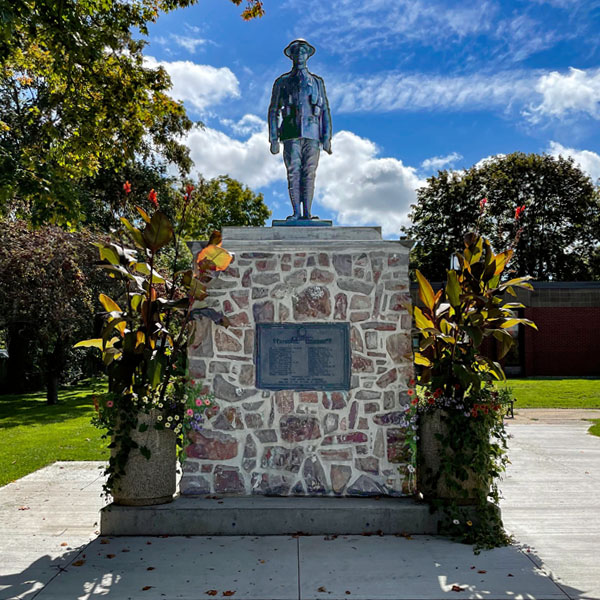On a recent fall trip to Nova Scotia, I stopped at the memorial for Mona Parsons, the only Canadian woman civilian to be imprisoned by the Nazis in WW 2 for resistance activities.

In 1941 she was found guilty of treason for helping and hiding downed Allied airmen escape to England from her Dutch home. She was sentenced to death by firing squad. However, because the judge liked her quiet temperament, he told her to appeal her sentence. The cultural beliefs that women were not capable of espionage — which helped them trick the Nazis in the first place, were the same norms that helped Mona Parsons evade death. Her death sentence was overturned but she spent four years in hard labour until escaping and walking across many kilometres of German territory. You can read more about her war journey here.
How Women’s Stories are Told
These photos show the statue of Mona Parsons in Wolfville, NS and on the same grounds, the adjacent WW 1&2 memorial honouring the men who fought. As you can see they are in sharp contrast to each other. One is stately and the other rather amusing or odd for the subject matter. Mona Parsons is kicking off her Dutch clogs and dancing to commemorate her statement at the liberation of Holland in 1945; “The joy is almost too much to bear.” Her story, like many women in the resistance and military, only came to light recently. In 2017 Andria Hill-Lehr wrote a book about her wartime heroism and since that time Mona Parsons’ story has been featured on a Heritage Minute and TV documentary. The statue was spearheaded by the Women of Wolfville and the Wolfville Historical Society. Nistal Prem de Boer, a Canadian-Dutch artist was commissioned to sculpt Mona Parsons.
I am always elated to see women’s stories told and honoured for their bravery, contributions and extreme risk-taking in such harrowing times that is, when the penalty is torture, death and/or hard labour. In a culture where many women find it difficult to stand up for themselves, it is important that these role models of courage be celebrated.
There is something about the translation of her story into the dancing statue and the hiring of a male artist to interpret and create her visual story that saddens me because it is a repetition of the same western norms that hold women in a subordinate place. The statue simultaneously honours freedom and yet denies her attributes of courage, tenacity, intelligence and more. Furthermore, there is a plaque that states that the statue is placed under an oak tree that was grown from an acorn picked up by a soldier in WW 1 while he was convalescing at Windsor Castle.
The tree now over 100 years old is majestic and beautiful but the placement of the Mona Parsons statue (in which she is obscured) under that tree has a suggestion of protection ~ an unconscious cultural dynamic was at play here, that is, that women need to be protected. Calling out cultural shadow is not about laying blame but rather bringing into consciousness the invisible assumptions and presumptions that are alive and well in western culture today.




 Mathematical Wizards
Mathematical Wizards
Leave a Reply